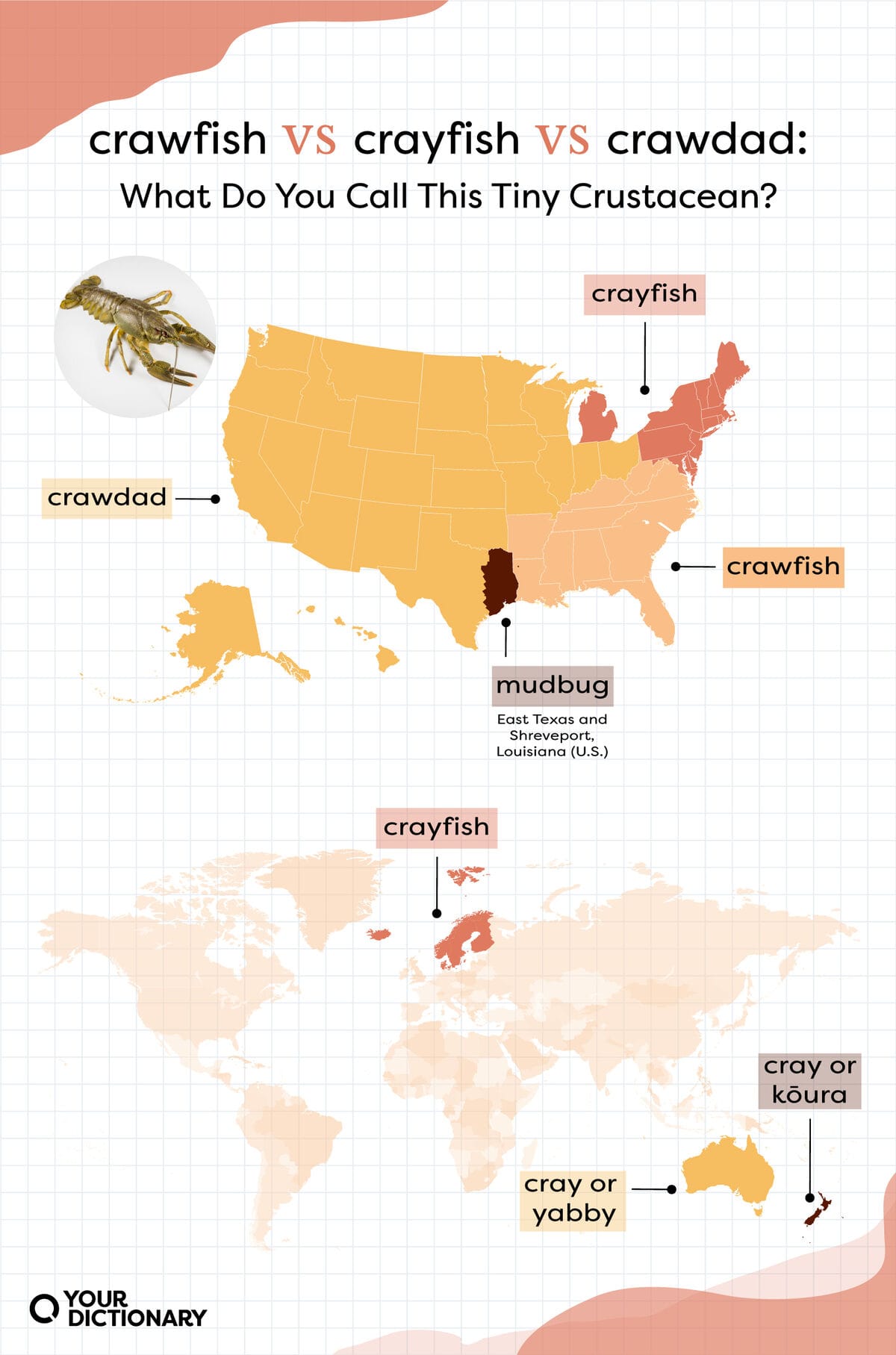You’ve probably heard these freshwater crustaceans called “crayfish,” “crawfish,” and “crawdads,” and you might be wondering if there’s a difference. Get ready to explore the fascinating world of these crustaceans! We’ll uncover what makes them unique, their ecological importance, and the simple truth about their names – spoiler alert: they’re all the same critter!
Regional Variations: A Crayfish by Any Other Name
Ever wondered what the difference is between crayfish, crawfish, and crawdads? You’re not alone! It’s a question that sparks debates from backyard barbecues to university research labs. The short answer? They’re all the same critter!
Think of it like this: “soda,” “pop,” and “coke”—different words, same sugary drink. It all boils down to where you’re from and what you grew up calling them. “Crawfish” is the star of the show in Louisiana and parts of the Southern U.S., practically synonymous with Cajun and Creole cooking. Up North, “crayfish” is the more common term. And out West, “crawdad” reigns supreme.
To add to the linguistic fun, in the Mississippi Delta, you might even hear them called “mudbugs”!
Why the Different Names?
This regional variation in names probably stems from the word’s French origins. “Crawfish” likely evolved from the Old French word “escrevisse.” As people migrated and dialects shifted, particularly in the U.S., variations like “crawdad” and the more formal “crayfish” emerged.
More Than Just a Name: Understanding Crayfish
Biology and Ecology
But regardless of what you call them, these freshwater crustaceans are pretty darn interesting. Imagine a miniature lobster, decked out with five pairs of legs, scuttling around in rivers, lakes, and streams across the globe (except, oddly enough, India and Antarctica). These amazing creatures belong to the phylum Arthropoda and are further divided into three main families: Cambaridae, Astacidae, and Parastacidae. Each family boasts unique characteristics, contributing to the biodiversity of freshwater ecosystems worldwide.
These little guys aren’t just tasty, they’re ecological VIPs. They’re like the ultimate recyclers, munching on dead plants and animals and keeping their watery homes tidy. Plus, they’re a vital part of the food chain, providing a protein-packed meal for fish, birds, otters, and even some humans (we’re looking at you, Louisiana crawfish boils!).
Ecological Importance: A Delicate Balance
However, the story of crayfish isn’t all sunshine and seafood platters. Sadly, pollution, habitat destruction, and the introduction of invasive species pose serious threats to these crustaceans.
Take, for example, the Rusty Crayfish. This invasive species outcompetes native crayfish for resources, disrupts ecosystems, and creates major challenges for conservationists. Understanding the delicate balance of these ecosystems and the impact of human activities is crucial for protecting these fascinating creatures.
Crayfish on the Menu: A Global Delicacy
Louisiana Crawfish Boils: A Culinary Tradition
While Louisiana proudly boasts its crawfish heritage, these crustaceans pop up in unique ways across different cultures. One of the most iconic culinary traditions associated with crawfish is the Louisiana Crawfish Boil. This social gathering brings people together to feast on mounds of boiled crawfish seasoned to perfection.
Global Crayfish Cuisine
But the culinary adventure doesn’t stop in Louisiana. From Swedish crayfish parties (Kräftskiva) featuring spiced boiled crayfish to Asian dishes incorporating them into flavorful stir-fries and soups, these crustaceans have earned a place on menus worldwide.
And let’s not forget the debate about whether you can eat crawdads – you absolutely can! Just be sure they’re cooked thoroughly and sourced from clean waters.
What is the difference between crawdad and crawfish? You can look at crawdad vs crawfish to find the answer.
Crayfish: Beyond the Dinner Plate
Cultural Symbolism
From ancient folklore to modern art, crayfish have held symbolic meaning in various cultures throughout history. In some cultures, they are seen as symbols of resilience and adaptability due to their ability to regenerate lost limbs. In others, they represent resourcefulness and the cyclical nature of life.
Responsible Pet Ownership
Crayfish can make fascinating pets, but it’s crucial to provide them with proper care. Research responsible ownership guidelines to ensure your crayfish thrive in their aquarium environment.
Ongoing Research
The world of crayfish is full of mystery! Scientists are constantly learning more about their behavior, ecological roles, and the potential impact of climate change on their populations.
Conclusion: Appreciating the Amazing Crayfish
The next time you encounter a crayfish, crawfish, or crawdad – whatever name you prefer! – take a moment to appreciate these fascinating creatures. They are more than just delicious seafood; they are vital members of our freshwater ecosystems, cultural icons, and subjects of ongoing scientific inquiry. Learn more about their life cycles by reading about cicada larvae, which also spend a significant portion of their lives underground. By understanding and protecting these creatures, we ensure a healthier planet for generations to come.
- Crypto Quotes’ Red Flags: Avoid Costly Mistakes - June 30, 2025
- Unlock Inspirational Crypto Quotes: Future Predictions - June 30, 2025
- Famous Bitcoin Quotes: A Deep Dive into Crypto’s History - June 30, 2025
















